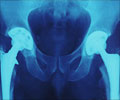Types of Computer Related Injuries
Do your fingers and wrists ache when you try to flex them backwards? Do you feel a stiffness building up in your neck and in your lower back while you are working at a computer? Do your eyes burn and feel sore while sitting facing a computer screen for a long time?
More and more computer users are beginning to identify with similar problems in their workplace while working on computers. Broadly termed as Cumulative Trauma Disorders (CTD) or Repetitive Stress/Strain Injury (RSI), these are disorders of the musculoskeletal and nervous systems that are likely to be caused by repetitive tasks, forceful exertions, vibrations, or remaining for long at awkward positions. Eyestrain, headaches and general discomfort are also health problems frequently reported by computer users. Following are the some of types of computer-related injuries:
- Repetitive Stress/Strain Injury (RSI)
- Work-related Upper Limb Disorder (WRULD)
- Musculoskeletal Disorder (MSD)(mainly neck, shoulder and lower back pain)
- Occupational Overuse Syndrome (OOS)
- Computer Vision Syndrome (CVS)
- Eye Strain, tension headaches and discomfort
- Occupational physicians prefer to believe computer-related injuries are the result of over-use or under-use of our bodily functions.
The over-use factor is caused by repeatedly making the same, small movements, countless number of times - typing on a keyboard or steering a mouse. Such repeated actions initially cause pain in the wrist and elbow joints and gradually develop into complications that include injuries to the elbow, wrist and hand. Poor posture, especially slouching over the keyboard, lead to muscle and joint problems that spread to the back, neck and shoulders.
The under-use factor happens because of the sedentary nature of a computer job that allows us to sit down for long hours without exercise, leading to complications such as heart disease and diabetes in the long run.
Repeated Stress/Strain Injuries
Repeated Stress Injuries are caused by monotonously repeated physical movements that can cause damage to the tendons, nerves, muscles and other body tissues that are primarily soft. Previously, people who did typical tasks like meat packing, or even musicians, were known to suffer from Repeated Stress Injury. Of late, such injuries are becoming highly peculiar to computer users who pound at high speed on keyboards injuring their hands, arms and shoulders in the process.
The following conditions categorized under Repeated Stress Injuries may also have other causes such as playing tennis, musical instruments or lifting weights but they are now commonly seen in office workers who spend long hours at the computer.
a) Tendonitis: Inflammation of tendons caused by their prolonged and repeated tensing.
b) Tenosynovitis: Inflammation of the tendon sheath. When the repeated activity exceeds the tendon sheath’s ability to lubricate the tendon, the tendon sheath thickens, is inflamed and causes pain.
c) Bursitis: Swelling or irritation of the connective tissue that surrounds a joint—usually the shoulder joint.
d) Synovitis: Swelling or irritation of a synovial (joint) lining.
e) DeQuervains’s Disease: A kind of Synovitis that occurs at the base of the thumb.
f) Cervical Radiculopathy: Compression of nerve roots in the neck.
g) Ulnar Nerve Entrapment: Compression of ulnar nerve in the wrist.
h) Low Back Disorders: These may be caused by prolonged poor body mechanics, or faulty posture.
i) Carpal Tunnel Syndrome: Of late,Carpal tunnel syndrome (also known as median neuropathy at the wrists) is being diagnosed in computer workers. This syndrome happens when the median nerve, running from the forearm into the hand, gets compressed at the wrist. It is known to be triggered by prolonged, continuous, quick movements of the wrist, without relief, in an unchanging manner.
In this condition, an irritation of the median nerve is caused by swelling and inflammation of the soft tissue within a portion of the wrist called "carpal tunnel", which is a canal or passage through which the median nerve passes.
Common symptoms of Carpal Tunnel syndrome include numbness and/or a tingling or burning sensation (known as paresthesia) in the thumb, index finger, middle finger, and a portion of the ring finger and sometimes even in the palms. Other symptoms include sudden wrist pain that can shoot up from the forearm to the elbow and cause severe sleep disorders. Studies have shown that certain groups of people are more prone to developing Carpal tunnel syndrome. They are –people with a family history, menopausal and pregnant women, people with rheumatoid arthritis condition, obesity, and diabetes.
Stress due to job demands, poor support from co-workers, dissatisfaction with work and a host of other social and psychological problems are known to aggravate the problem.
The following are some of the symptoms that may indicate the onset of Repeated Stress Injuries-
- Recurring Myalgia (muscle pain) or soreness in the shoulders, neck, upper back or hands and wrists.
- Tingling sensation in fingers and/or wrists, numbness, coldness or loss of sensation.
- Loss of grip strength, inability to hold things, wear clothes, and weakness.
- Arms and shoulder muscles feel hard and wiry when palpated.
- Pain or numbness while lying in bed, that is often mistakenly attributed by people to awkward sleep positions.
Eyestrain
The usual symptoms of eyestrain include:
- Tired, burning or itchy eyes
- Watery or, dry eyes
- Blurred or double vision
- Headache
- Sore neck
- Increased sensitivity to light
- Trouble shifting your focus between monitor and paper documents
- Color fringes or afterimages when you look away from the monitor.
















